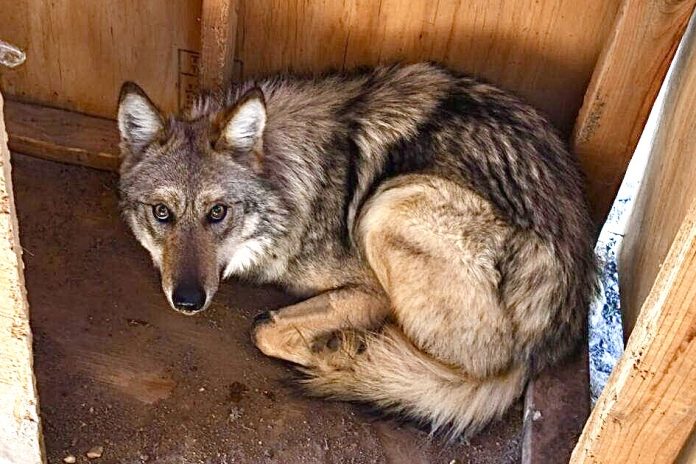
Asha The Mexican Gray Wolf Was Captured Again In New Mexico After Wandering Outside Of Arbitrary “Designated Zone”
You can help all animals and our planet by choosing compassion on your plate and in your glass. #GoVeg
RELATED ARTICLES
Banning Cruelty: New Legislation Aims To Ban Octopus Farming In The U.S.
New bipartisan legislation has just been introduced in the U.S. to ban commercial octopus farming and prohibit imports of farmed octopus from foreign countries.
The...
Outrage In Yellowstone! Grizzly Bear Killed By Wildlife Officials & Left With Head & Paws Cut Off
Photo by: Trisha McFarland / Cowboy State Daily
A photo of a dead grizzly bear with its head and paws cut off has caused an...
Inside Florida’s Illegal Horse Meat Trade: Undercover Footage Shows Racehorse Being Shot & Butchered
A heart-wrenching discovery of illegal horse slaughter has emerged, with video footage exposing the tragic killing of a racehorse named 'Funny Biz,' who was...
Popular stories
News
Victory! Oregon Bans The Sale Of Puppies & Kittens Sold At Pet Stores & Cosmetics Tested On Animals
Hopeful news as Oregon’s Governor Tina Kotek recently signed several critical animal welfare bills into law. The first bill, (HB 2915), stops the sale of puppy...
News
Peace 4 Animals, SCIL & Friends Of The Earth Co-Sponsors Deforestation-Free Act To Make California A Leader In Protecting Tropical Forests & Endangered Species
Following last year’s devastating fires in the Amazon Rainforest, Assemblymember Ash Kalra (D-San Jose), along with Senator Ben Allen, Assemblymembers: Richard Bloom (D-Santa Monica), Eduardo...
News
UK Slaughterhouse & Six Employees Sentenced For Animal Welfare Offenses Against Cows & Sheep They Murdered
The business operator of G and GB Hewitt Ltd, a slaughterhouse in Chester, England, along with six men who worked there have been sentenced...


